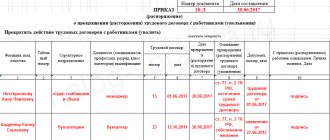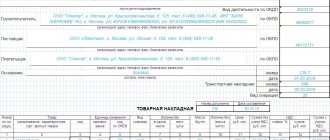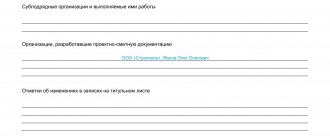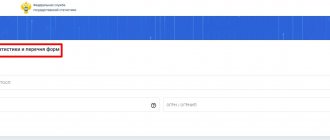A supplier of a trading company can be not only an individual entrepreneur or a legal entity, but also an ordinary citizen - an individual. In practice, organizations usually purchase food products - meat, milk, vegetables, fruits, mushrooms, berries and other products that a person has grown or collected himself. Such cooperation is usually more profitable for companies due to low prices. In the article we will tell you how to fill out form OP-5 (purchase act), we will provide a form and a sample document.
Expenses on purchased goods can be accepted as a reduction in tax profit only if there is a documentary justification, such as a procurement act. Goskomstat provides a standard form of act OP-5; it is mandatory for those organizations that purchase products for use in public catering.
Where is the OP-5 form used at the enterprise?
The purchase act form is used by trading companies purchasing products from individuals. In practice, a purchase and sale agreement is concluded between a person and an organization, which stipulates the price and items of sale. At the time of the transaction, the procurement act is filled out in two copies - according to the number of parties involved.
The organization needs the act to present to the tax authorities as justification for classifying the costs of purchasing goods from the population as expenses.
The absence of a procurement act will not allow you to prove the fact of expenses, and, therefore, it will not be possible to reduce taxable profit. In order for the Federal Tax Service to accept the procurement act as a basis document, it is necessary to ensure its correct execution.
Purchase agreement from an individual
In general, the terms of the contract are no different, and the process of concluding is absolutely the same as signing documents with any commercial company. Both the contract with the “physicist” and subsequent closing documents must be signed in simple written form. The only thing is that there are some nuances regarding taxes. The customer is obliged to make contributions to the Pension Fund and the Compulsory Medical Insurance Fund, and the contract also includes a clause on reducing the payment amount by the amount of tax payments (NDFL):
You can download a sample purchase agreement from an individual at the end of the article.
Who fills out the procurement act?
There are two parties involved in the preparation of the OP-5 form:
- Seller – a person who sells his food products;
- Buyer – an organization that purchases goods from an individual.
The completed act confirms the fact of the transaction; for this, the required information must be reflected to the maximum extent possible, including the full details of the individual that correspond to reality, as well as his signature. A person’s refusal to indicate his passport details, enter his residential address or put his signature on the document will make the document invalid.
The procurement act, in fact, is an analogue of the TORG-12 consignment note, filled out for purchase and sale transactions between legal entities or individual entrepreneurs. In relation to the purchase of goods from individuals without the formation of an individual entrepreneur, the use of TORG-12 is not allowed, therefore a procurement act is drawn up.
Who signs the procurement act?
Each completed copy of Form OP-5 must have two signatures - the buyer and the seller. If the seller, an individual, for any reason does not want to sign the document, then the act will not have legal force and will not be accepted by the Federal Tax Service to justify the organization’s expenses for the purchase of food products.
On behalf of the seller, the signature is placed by the citizen himself or his representative, for whom the corresponding power of attorney will be drawn up. A representative of the organization, authorized to do so by the relevant document - an order or power of attorney, or a charter in relation to the manager, signs on behalf of the buyer.
Purchase restrictions
So, we have determined that the procurement act of form OP-5 is “tailored” for agricultural products purchased from individuals, that is, for the property of citizens, grown by them in their personal subsidiary plots or farms without forming a legal entity.
If the buyer, a legal entity, plans to purchase berries, nuts, mushrooms, game, fish, etc. from individuals, then the procurement act will have to be developed independently.
Regardless of what kind of food products are purchased, they must be subjected to veterinary and sanitary examination. Therefore, before drawing up the purchase act, you should ask the seller to present veterinary certificates and other documents that would confirm the quality of the products being sold.
In accordance with Resolution No. 10 of the State Committee for Sanitary and Epidemiological Supervision SP 2.3.4.009, a ban has been established on the purchase of processed mushrooms from private individuals.
What documents are used to fill out the procurement act?
The purchase act is drawn up in addition to the contract or agreement concluded between the buyer and the individual selling his goods. At the same time, the terms of the agreement stipulate the fact of execution of the act.
The transaction involves the movement of goods from the seller to the buyer and the transfer of money in the opposite direction.
A signed procurement act confirms the acceptance and transfer of goods; the movement of money can be confirmed with a receipt. Moreover, it is not necessary to draw up a separate document; a receipt for receipt of money is included in the content of the standard form OP-5. It is filled out by the seller at the time he receives money for his goods.
If the procurement act is drawn up according to your own developed form, then you can provide a section with a receipt in the form. If there is none, then the individual, after receiving money from the organization, will need to write in his own hand the text of the receipt of payment and certify it with his signature.
For settlements with the seller, the representative of the organization is usually given cash on account, the expenditure of which he then provides a report on. Therefore, in addition to the specified documents, you will have to fill out an advance report.
Additionally, the purchasing organization draws up an act of acceptance of the goods into the warehouse. You can use the standard TORG-4 form; this document is used to justify the acceptance of goods purchased without a supplier’s account for storage in the enterprise’s warehouse. This act is drawn up in two copies - for the warehouse storekeeper and the accounting department.
Recommendations for completing the OP-5 form
The standard form OP-5 is filled out on both sides:
- On the front side there is a header part for reflecting general information and a tabular part for entering a list of purchased goods;
- The reverse side contains the details of the seller, a receipt for receipt of payment, as well as a place for signatures by the parties.
The header section displays the following data:
- Details of the buyer's company - name of the legal entity, address, OKPO, INN, division, type of activity and transaction code;
- Number and date of the procurement act - the date must coincide with the day of the transaction, the number is set independently, and there should not be repetitions within the same reporting period;
- Position and full name of the person representing the buyer’s organization;
- Full name of the individual seller (the remaining details of this person are filled out on the reverse side of the procurement act).
The table is filled in as follows:
| Column number | Information to be filled in |
| 1 | Name of the purchased product. Form OP-5 was developed and approved for agricultural products that are purchased by catering companies, therefore the column of the table has the appropriate name. If the standard form is used by a trade organization that is not involved in public catering, then the column can be renamed. |
| 2 | Code for the specified product, if the appropriate coding system is installed. |
| 3 | The name of the unit in which the specified product is measured. |
| 4 | The corresponding code of the specified unit according to OKEI. |
| 5 | The quantity of goods purchased, expressed in the specified units of measurement. |
| 6 | Unit price – VAT is not charged on this price in transactions with the public. |
| 7 | The amount per item, calculated as the result of multiplying the price by the quantity. |
All purchased items of goods are listed sequentially in a table, based on the results of which the total amount of the transaction is summed up.
Filling out the reverse side of form OP-5:
- Total amount in capital form;
- Seller's passport details;
- Seller's home address;
- If the seller is an individual with the formation of an individual entrepreneur, then the details of the business registration certificate are filled in;
- If goods grown on your own farm are to be sold, then details of documentary evidence of the presence of a personal farm are indicated;
- The amount of money accepted by the seller from the buyer;
- Signatures of the parties.
Errors in filling out form OP-5
The purchasing company must make sure that the procurement act is drawn up correctly, without errors, otherwise the Federal Tax Service may not accept this document, and it will not be possible to include expenses in reducing taxable profit.
Errors in filling out may be due to insufficient information about the seller. Passport details and residential address must be included. If this information is missing, the tax office will refuse to accept the act. If the details are filled out, but after verification it turns out that the specified passport was not issued, or the individual does not live at the given address, then the Federal Tax Service will also refuse to accept the act.
Another mistake that is not allowed in filling out the purchase act is the absence of the seller’s signature. A person selling his goods to an organization must sign the deed form. If there is no signature, then the act does not need to be submitted to the tax office; it will not be accepted. In this case, the organization will have to collect other documents that can confirm the transaction.
Sometimes in such situations, the buyer tries to sign for the seller by forging his signature, but it is better not to do this; an examination will easily reveal the forgery.
You also need to pay attention to the goods being purchased, or rather to their quantity. An organization purchasing products from the population must understand that you can only buy the quantity that an individual is able to collect or grow on their own. For example, purchasing tons of nuts from an individual is not possible; a person is not able to collect tons of nuts. The tax office monitors this moment and may refuse to accept the procurement act and expenses for it if the volumes of goods purchased seem suspicious.
How is such a purchase made?
There are no special rules for processing order documents in the case of admission of individuals. The customer lists in the procurement documentation and notice the documents that he requires from suppliers and attaches the recommended application form for participation in the procurement.
Individuals do not have statutory or registration documents, they only have personal registers. They demonstrate to the customer:
- FULL NAME. and registration and residence addresses instead of the name of the supplier and its legal and actual address;
- passport (copy of all 20 pages) instead of an extract from the Unified State Register of Legal Entities or Unified State Register of Individual Entrepreneurs;
- TIN is not a mandatory document for citizens (only for organizations and individual entrepreneurs).
There are no other features or restrictions. An individual participant fills out an application, makes a price offer and participates in the auction. When transferring GWS, a special procurement act is drawn up: this is a special document that is used to formalize the delivery and acceptance of goods, works and services between the customer organization and the individual supplier.
Difficulties arise with the execution of the contract. There are a number of provisions that are mandatory for agreements under 44-FZ between individuals and legal entities:
- Citizens receiving income are required to pay income tax: 13% for residents and 30% for non-residents. The tax agent is the customer organization. We include in the contract a condition to reduce the amount transferred to an individual for goods, work, and services supplied by the amount of personal income tax (Part 13, Article 34 of 44-FZ). If such a clause is not agreed upon with the supplier, the contract is automatically invalidated.
- The situation is similar with insurance premiums. The tax agent is required to transfer 22% to compulsory pension insurance, 5.1% to compulsory medical insurance, and 2.9% to the Social Insurance Fund. All these amounts are deducted from the contract price. The customer is recommended to specify this condition in advance - even at the stage of drawing up procurement documentation.
- Agreements concluded with an individual as the only supplier are drawn up without indicating that the customer acts as a tax agent (Part 15, Article 34 of 44-FZ). The inclusion of this condition is not a violation. The customer will become a violator if he does not transfer the required amount of taxes and contributions.
IMPORTANT!
Contracts with individuals are not taken into account when calculating the volume of purchases for SMEs, since individuals are not small businesses.




